The large-scale constructions booming in the post-Compromise era, the representative real estates being built, naturally also led to the development of the related applied arts sectors. Artistic works came out of the factories and workshops. Rudolf Kissling's company specialised in the production of chandeliers and bronze goods and has gained a growing reputation.
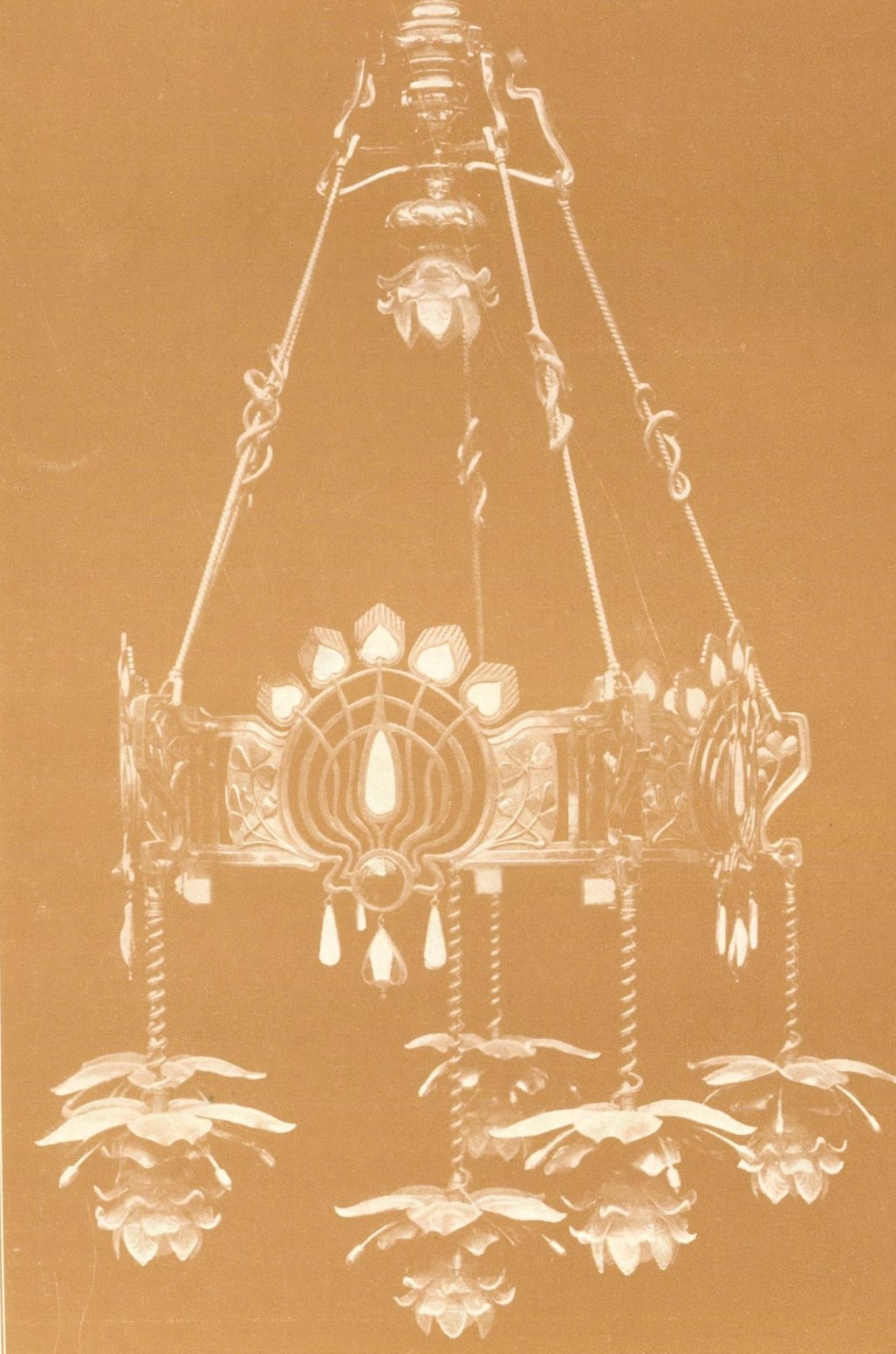
Chandelier made of brass, designed by architect Albert Kálmán Kőrössy and made by the Kissling Factory (Source: Magyar Iparművészet, Issue 1902/1)
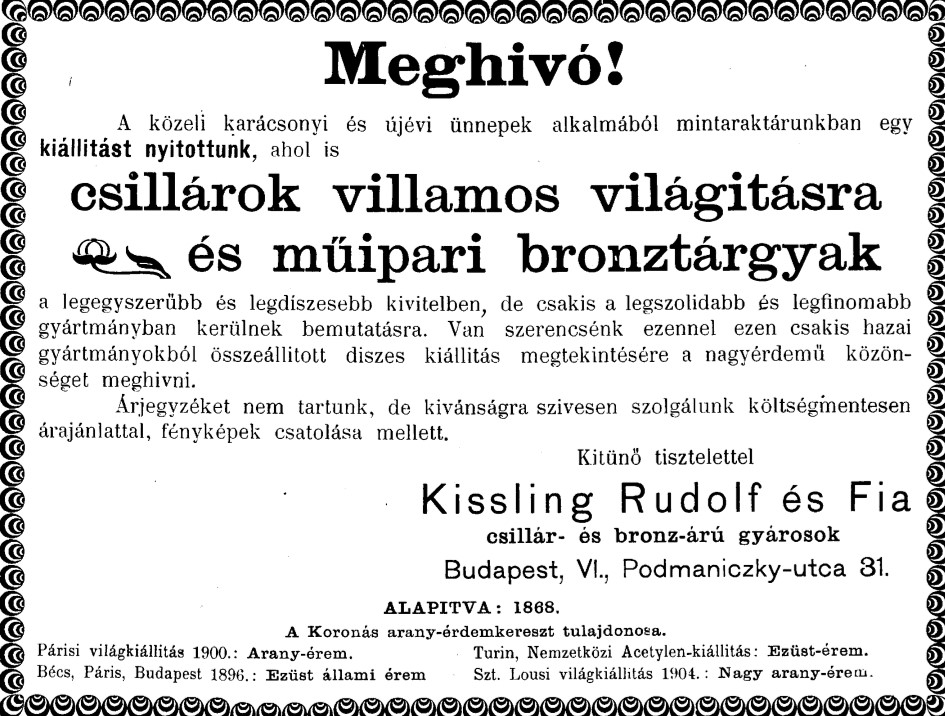
Advertisement of the Kissling Factory in the 25 December 1904 issue of Esztergom
Rudolf (Rezső) Kissling was born in 1834. In the year following the Compromise, in 1868, he founded a company that manufactured bronze chandeliers, other lighting fixtures, and other bronze articles. Thanks to the diligence and the artistic level of the products made, the factory soon began to develop and was able to contribute to the applied arts equipment of more and more famous public institutions. The founder's son, Alfréd Kissling, also joined the management of the company.
Their sample warehouse was located at 31 Podmaniczky Street in Terézváros. Here, people could view and buy the already finished and exhibited products. Their factory was in the 6th District, at 5 Jász Street.
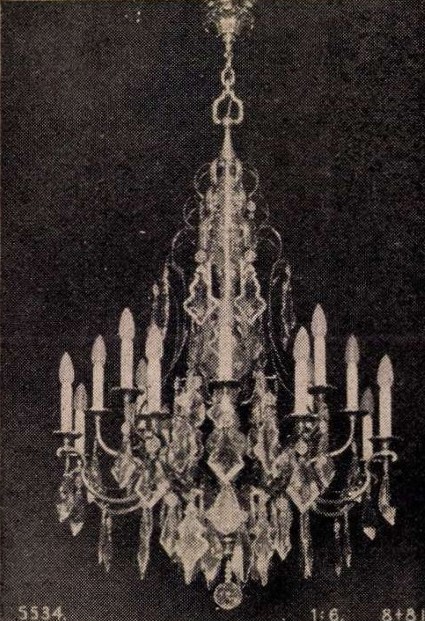
Kissling's ornate bronze chandelier (Source: Lexicon of the Hungarian Resurrection, 1930)
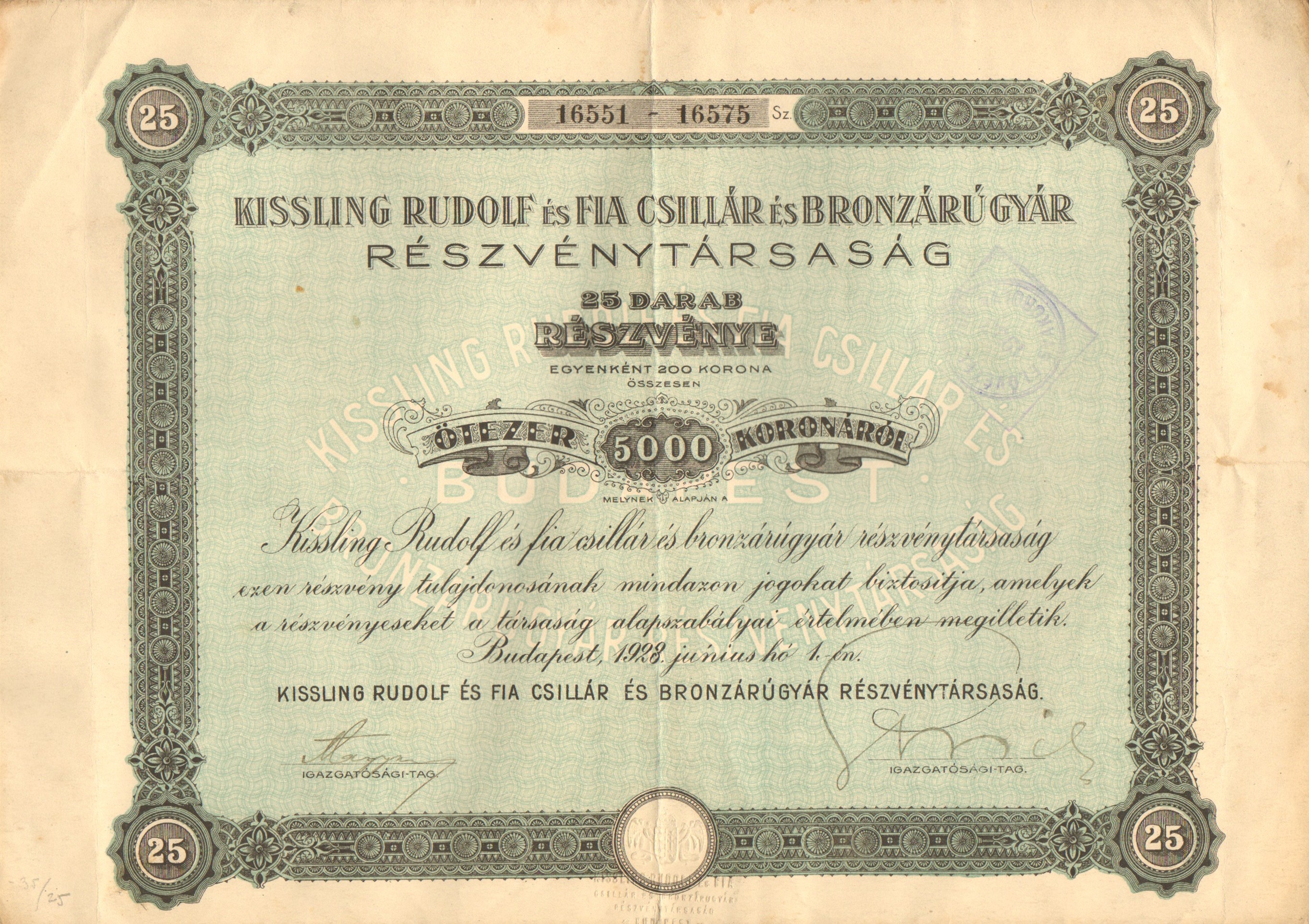
Share certificate of the Kissling Factory in 1928 (Source: Hungarian National Digital Archive)
Their growing number of orders covered most of the united Budapest. Among other things, the Kisslings made the Neo-Gothic chandelier (demolished since then) of the St. Ladislaus Church in Kőbánya, which was handed over in 1899. The palace of the Salgótarján Coal Mines Public Limited Company, located at 25 Arany János Street in the city centre, designed by Alfréd Wellisch, and handed over in 1904, had special chandeliers that praised the work of the Kissling company.
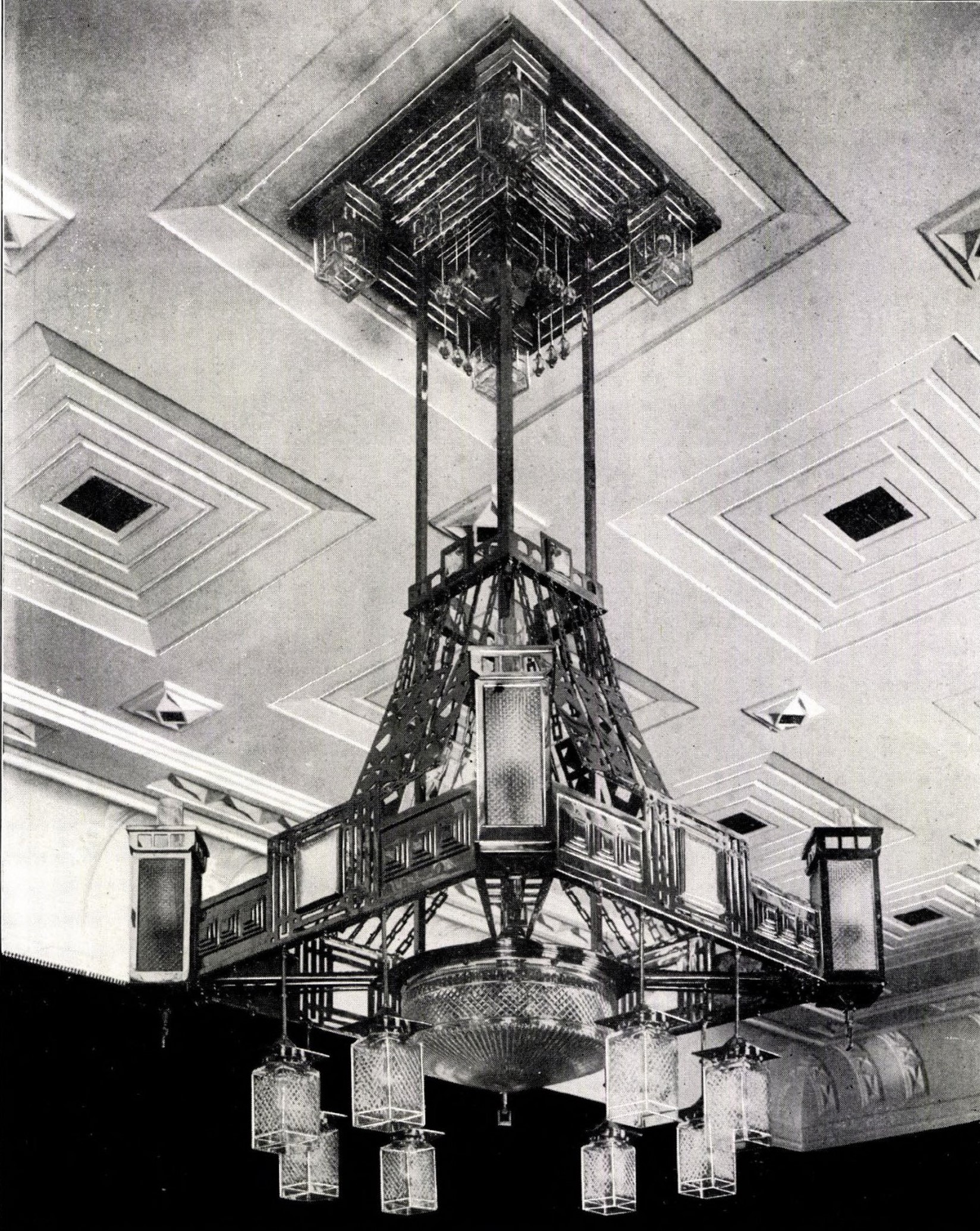
One of the chandeliers of the headquarters of Salgótarján Coal Mines Public Limited Company, on Arany János Street (Source: Magyar Építőművészet, Issue 1907/11)
The chandeliers of the representative building of the Austro-Hungarian Bank on Szabadság Square (now the Hungarian National Bank, designed by Ignác Alpár, handed over in 1905) were also made in the Kissling Factory. In addition to such orders, it is not surprising that the chandeliers of the Parliament, which was built at the turn of the century, were also supplied by the Kisslings: two iron and bronze cast-iron types, three brass cast types and further six gilded brass types.
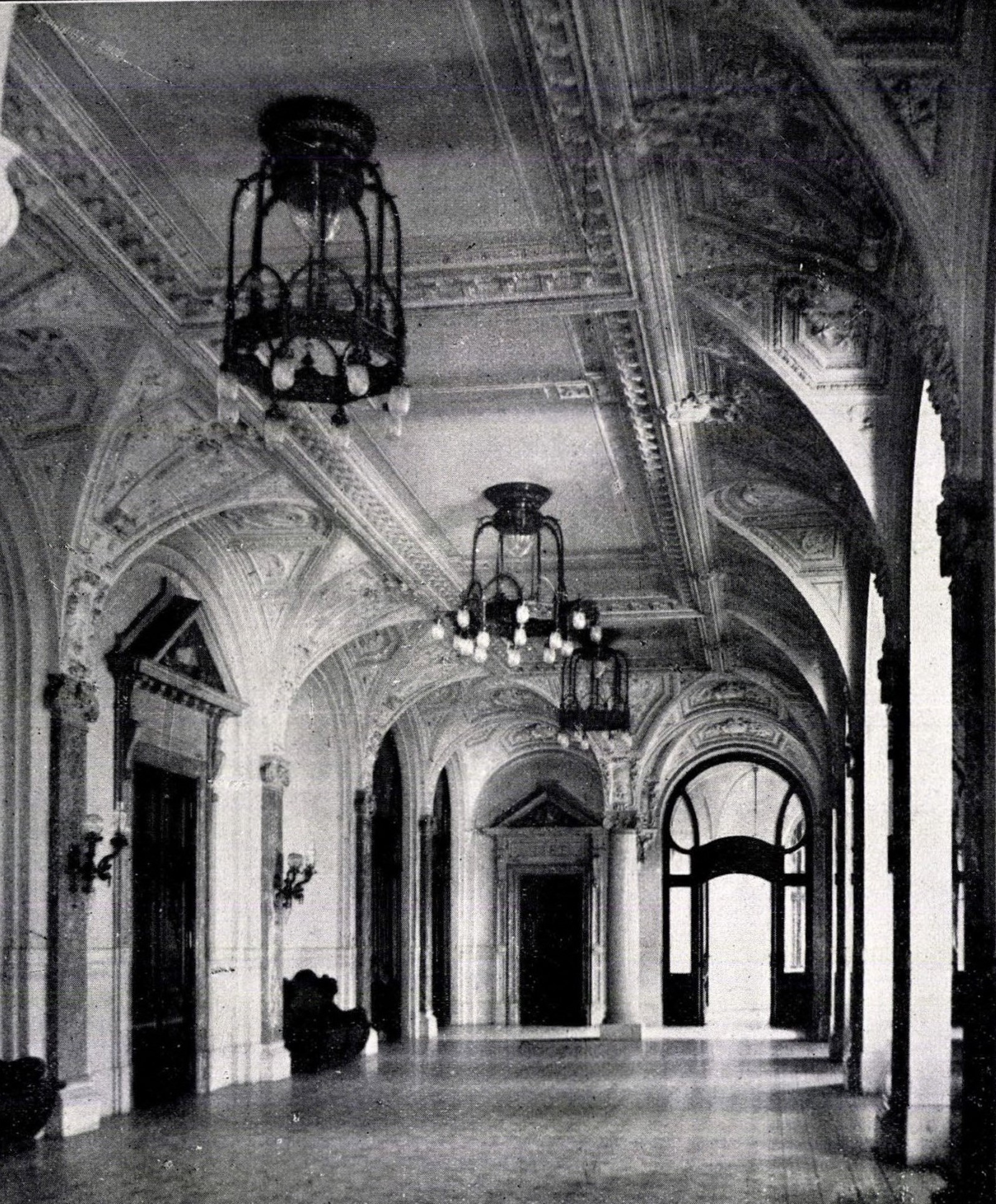
Chandeliers of the Austro-Hungarian Bank designed by Ignác Alpár (Source:Magyar Építőművészet, Issue 1917/4-6)
In addition to the capital, several important rural public buildings in the country were decorated with the chandeliers of the Kissling company, such as the town hall of Kiskunfélegyháza, the County Hall of Debrecen and the Palace of Culture in Marosvásárhely (today's Târgu Mureş, Romania).
The most impressive works of Rudolf Kissling and his son's factory are connected to the Buda Palace rebuilt by Alajos Hauszmann. During the large-scale work completed in 1905, the Kisslings were commissioned to create the chandeliers of several ceremonial halls under construction: the Neo-Renaissance Matthias Hunyadi Hall, the Neo-Baroque Habsburg Hall and the Buffet Hall.
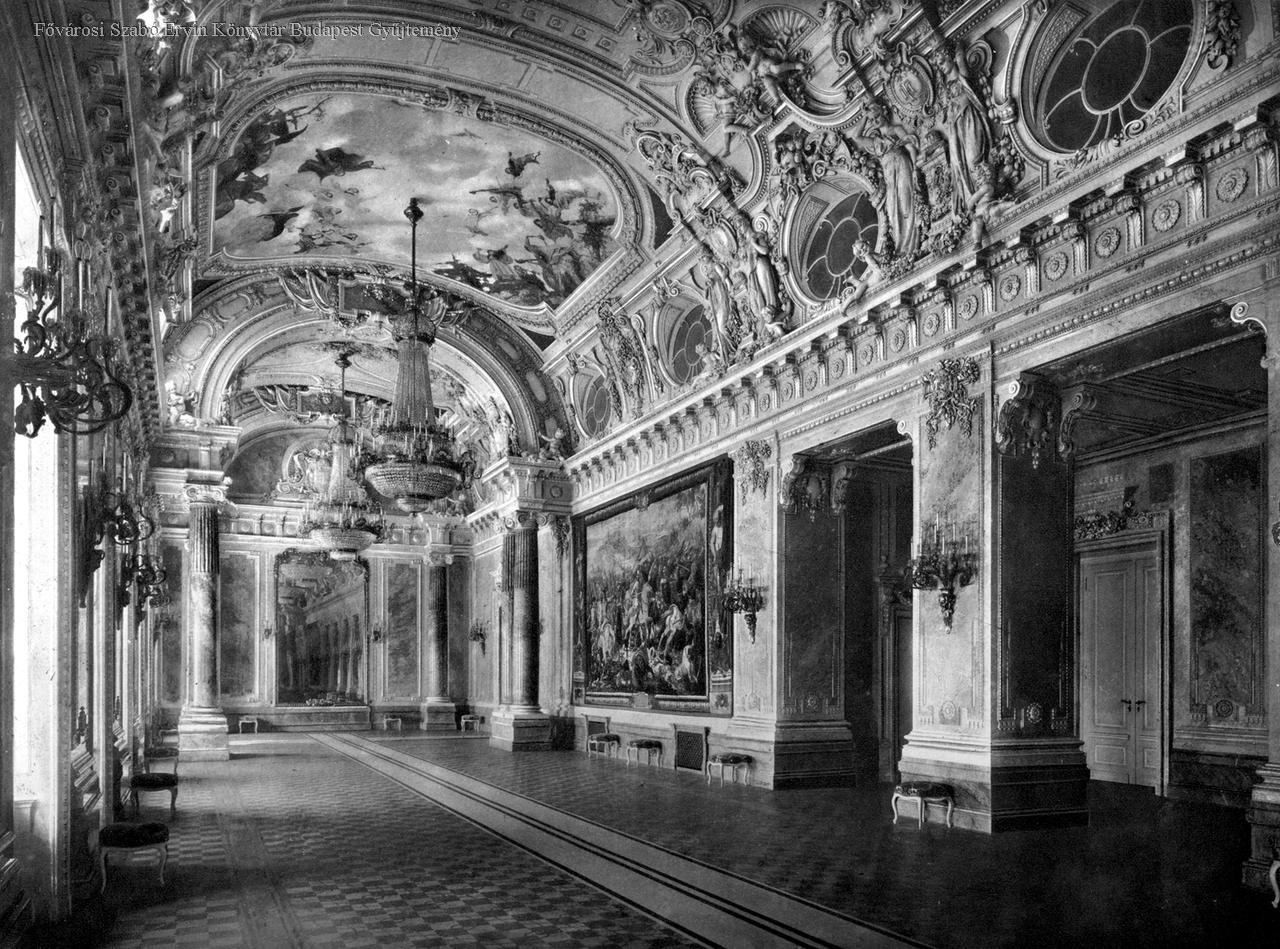
Buffet Hall of the Buda Castle (Source: FSZEK Budapest Collection)
They were given a similar task in the design of the St. Stephen's Hall designed by Hauszmann. The gilded brass luminaires, each weighing more than 100 kgs and decorated with crystal glass and precious stones, consisted of more than a hundred elements. The Kisslings also made the artistic wall lamps of nearly thirty elements, the bronze fittings of the doors, the door handles, the andiron of the Zsolnay fireplace and the ventilation grilles. The design of the wall lamps was in line with the motif of the inlaid floor: the 5-5 bulbs branched out from a dragon figure adorned with polished glass stones.
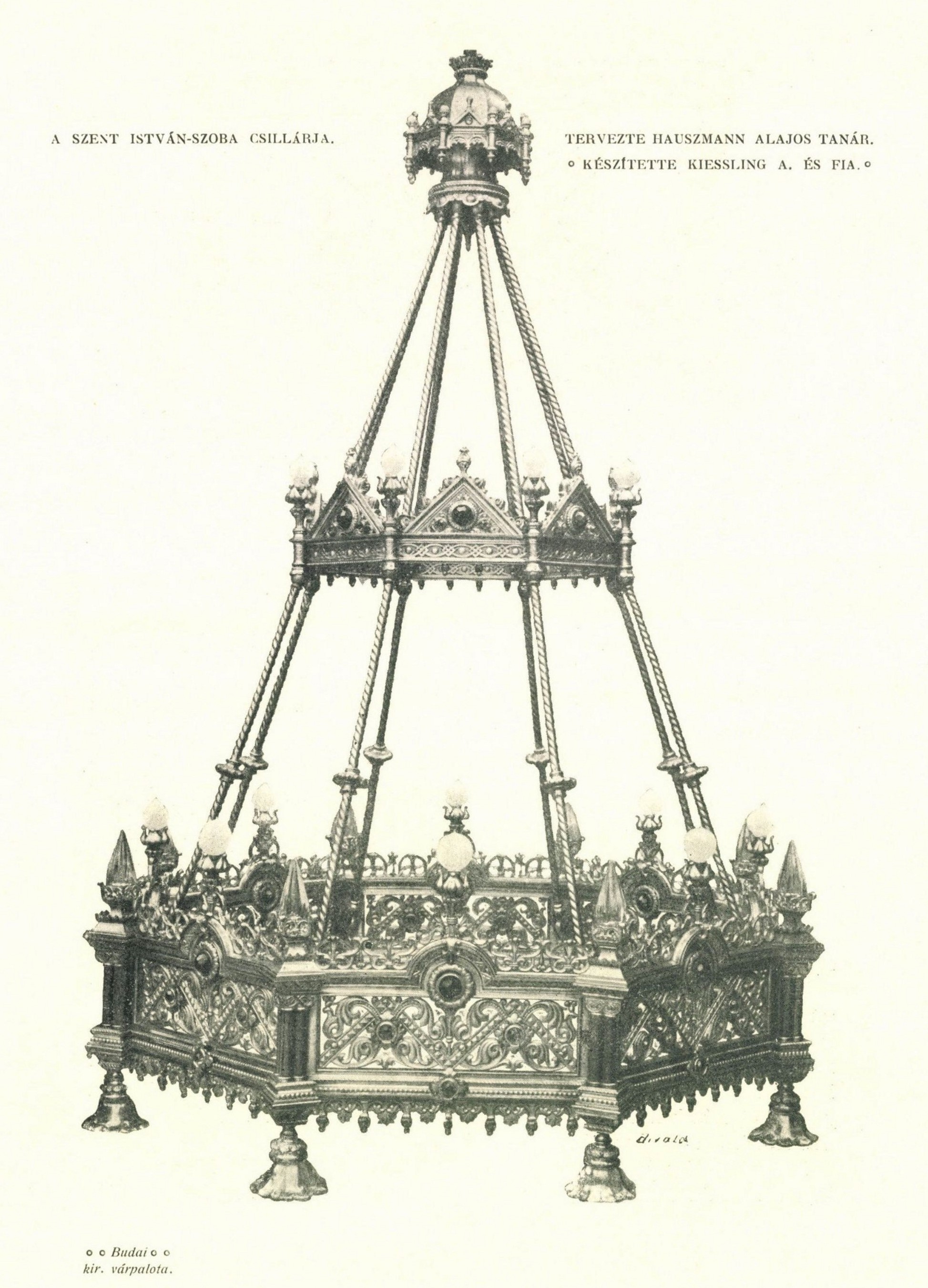
The chandeliers of St. Stephen's Hall were designed by Alajos Hauszmann and made by Kisslings (Source: Magyar Iparművészet, Issue 1900/3)
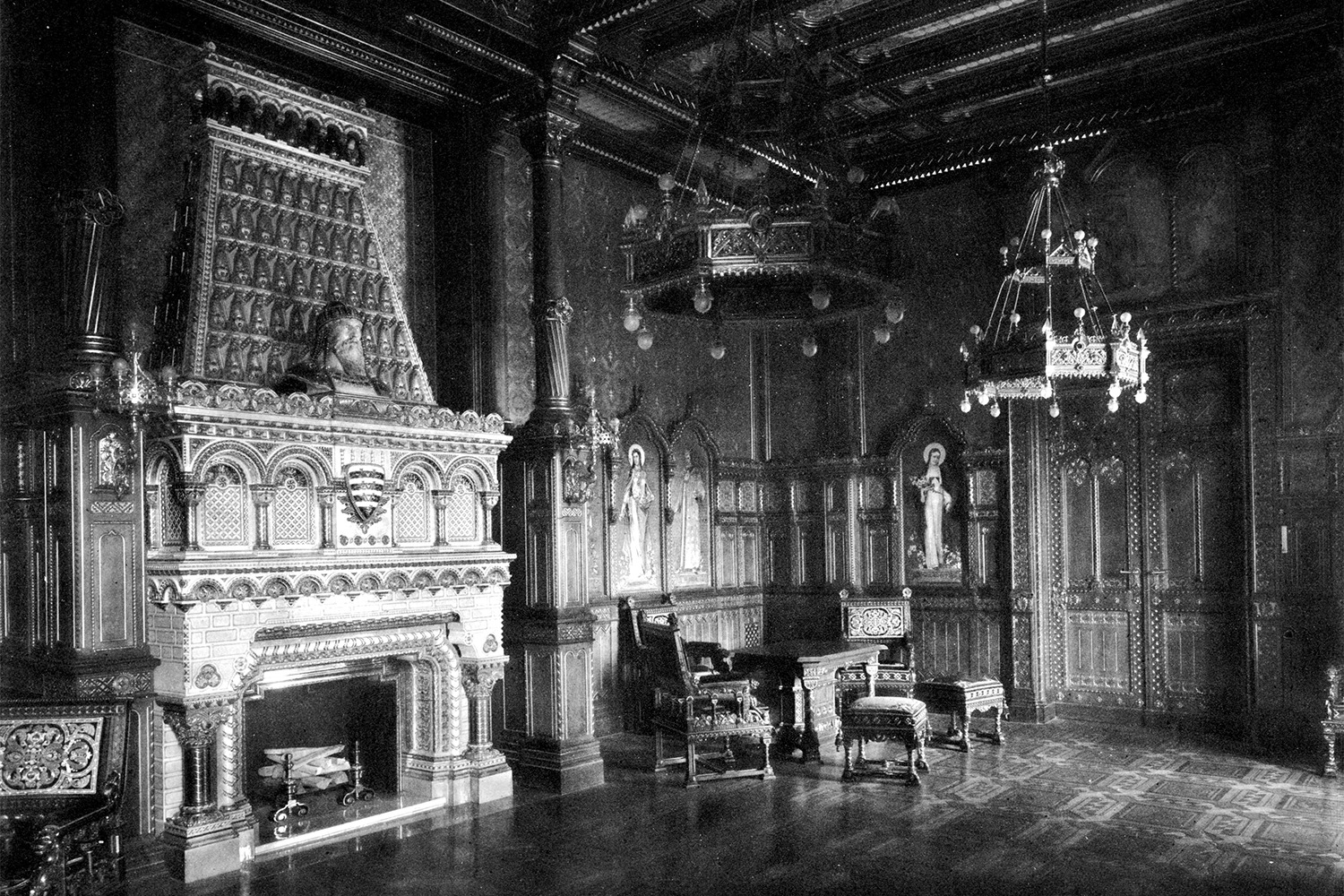
A contemporary photograph of St. Stephen's Hall, the ornate chandeliers being the highlight of the furnishings; their weight was more than 100 kgs each (Source: FSZEK Budapest Collection)
In addition to its European orders, the renowned factory has already supplied Egypt, India and America with its products. In addition to the chandeliers and wall lamps, candle holders, table lamps and bronze elements for fireplaces were also produced at that time, and even a bronze ink holder was made for Franz Joseph. The company employed 60-80, and later more than 100 permanent workers.
The first works of the Kisslings were honoured with several awards, including a gold medal at the 1900 Paris World's Fair and a large gold medal at the 1904 Saint Louis World's Fair. Rudolf Kissling was given a Gold Cross of Merit with Crown by Franz Joseph in 1906.
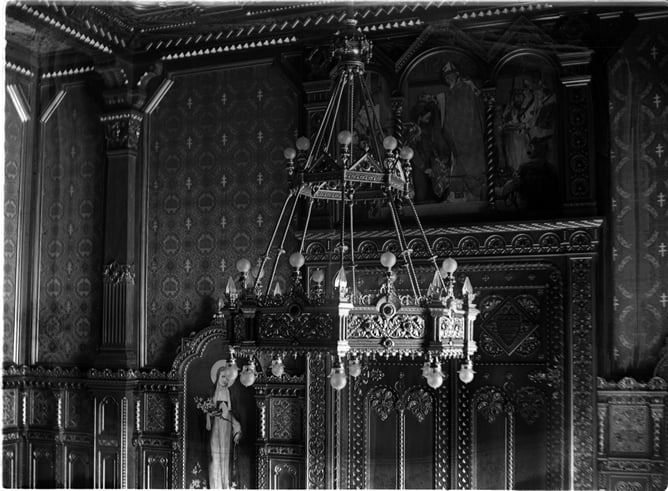
The contemporary photograph also shows the artistic, meticulous elaboration of the chandelier decorating St. Stephen's Hall (Source: Hungarian National Museum Historical Photo Department)
Rudolf Kissling died on 31 October 1911. The company was carried on by his son, Alfred, who died in 1917 after a long illness. In 1918, the company was transformed into a public limited company, which was managed by the People's Commissariat for Production during the Hungarian Soviet Republic. The company was also listed on the stock exchange in 1923; its share capital at that time was 15 million crowns (which later rose to 40 million), which was divided into 750,000 shares with a nominal value of 200 crowns.
The factory also prospered well between the two world wars, but the new political situation and nationalisation after the Second World War put an end to the public limited company, as a result of which the reputation of the most famous chandelier factory of the “old world” has faded and forgotten. From 20 August this year, the St. Stephen's Hall with the chandeliers and wall hangings inside, which was destroyed in the Second World War and reconstructed in recent years, can be visited again.
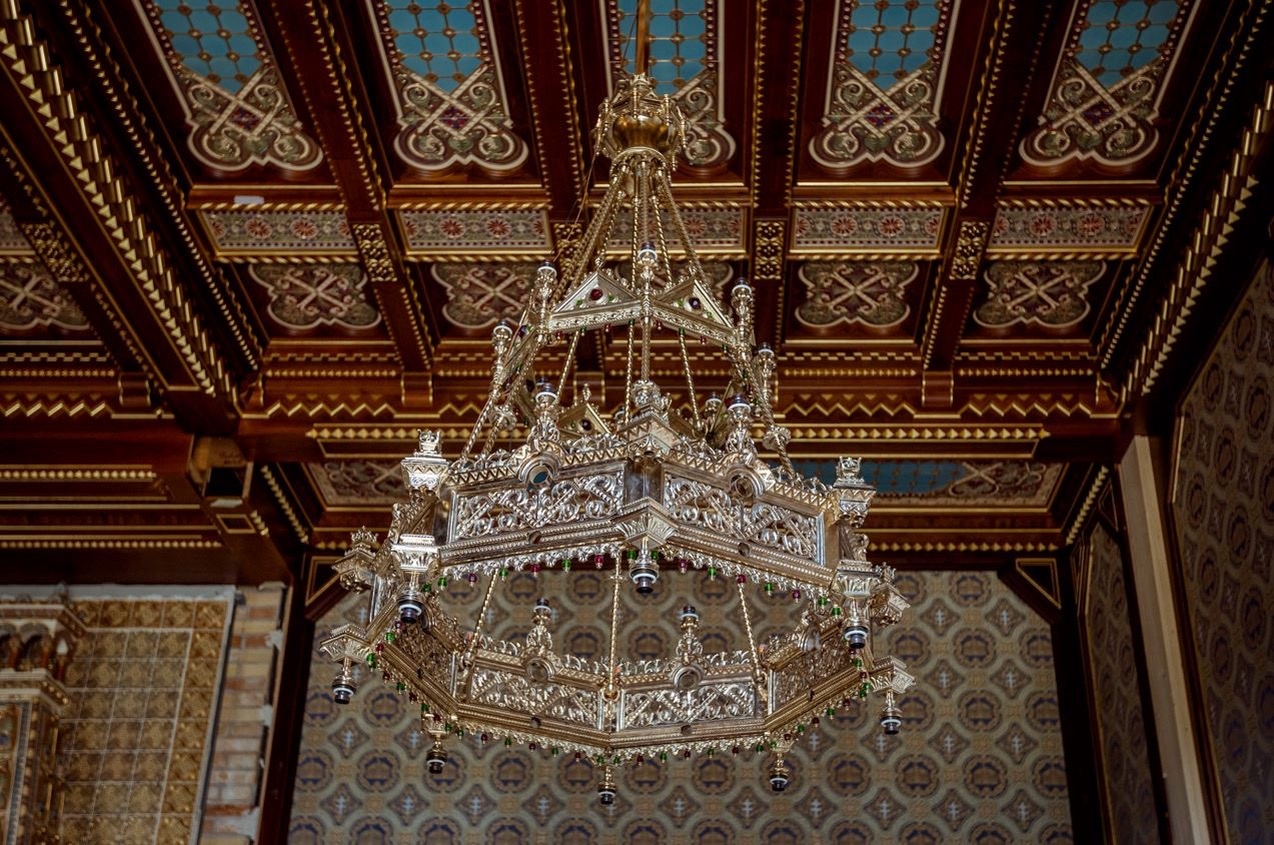
Reconstructed chandelier in the reborn St. Stephen's Hall (Photo: National Hauszmann Program)
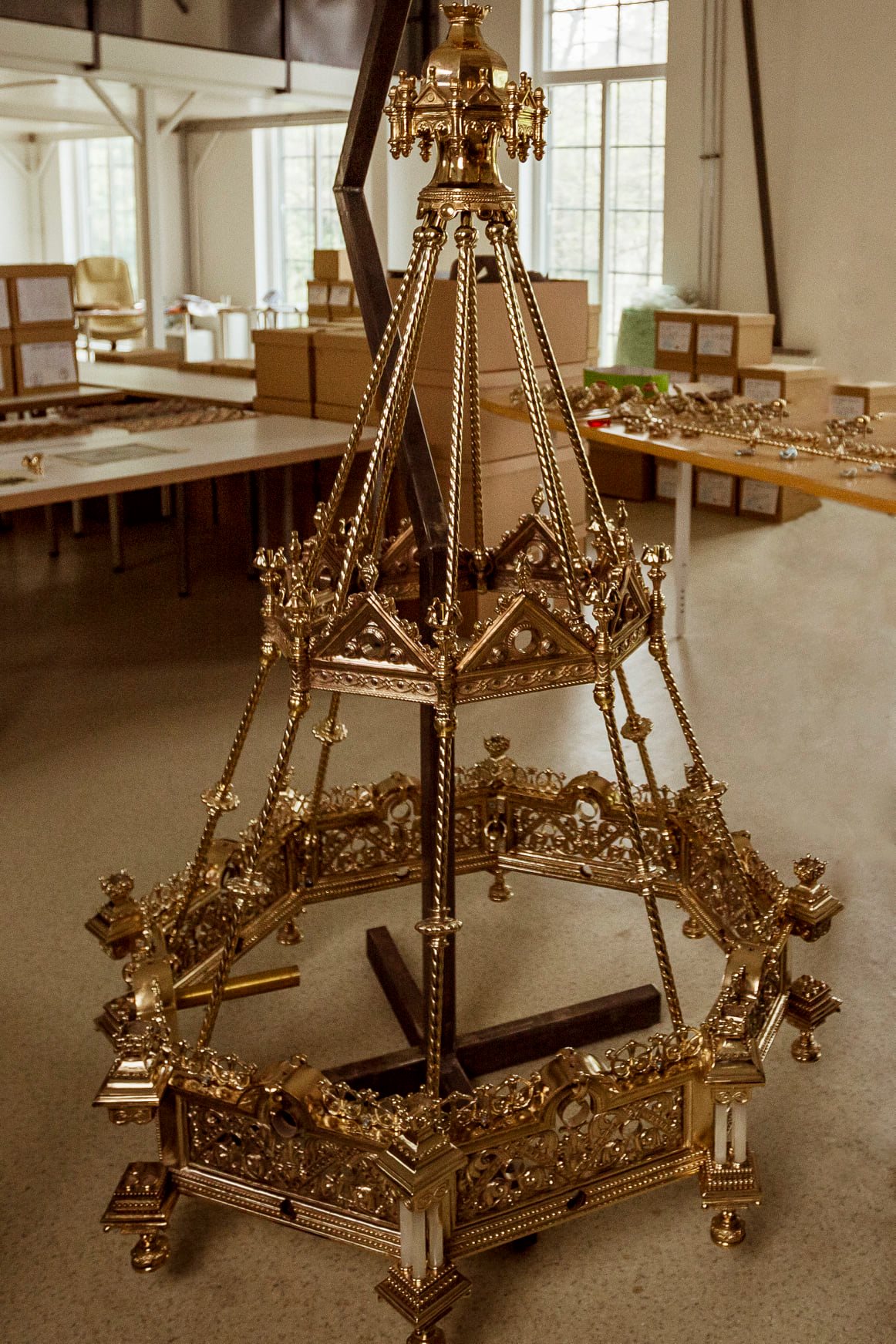
Details of the re-created chandelier (Photo: National Hauszmann Program)
The works of the Kisslings were designed and re-created based on long research work. In addition to the photos and plans of the time, the specialists were assisted in the design by the equipment of the Groedel Villa in Terézváros, which was build based on St. Stephen's Hall. The construction was carried out by the employees of Salisbury Ltd., eight foundry workers worked on the production of the bronze works, the decorative elements of the three chandeliers were made by goldsmith József Takács. The special lighting of the room is provided by a perfect replica of the ninety-two so-called St. Stephen's bulbs.
We hope that the reconstruction and handover of the St. Stephen's Hall will once again bring to the fore the late masters of Hungarian applied arts, including Rudolf and Alfréd Kissling.
Cover photo: Reconstructed chandelier in the reborn St. Stephen's Hall (Photo: National Hauszmann Program)

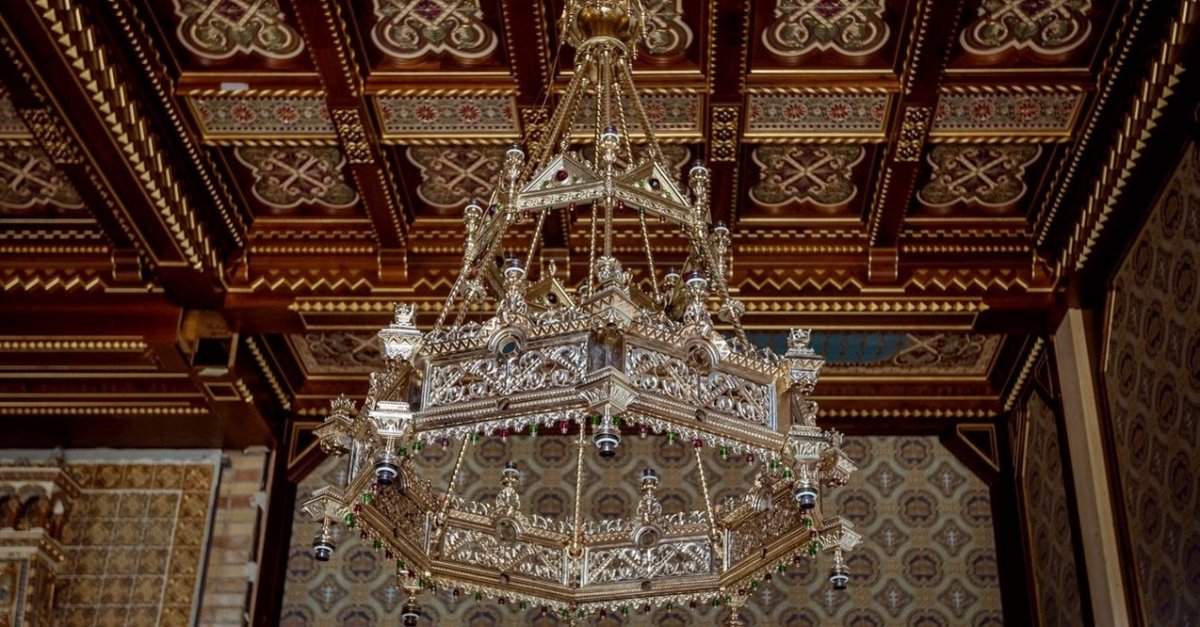
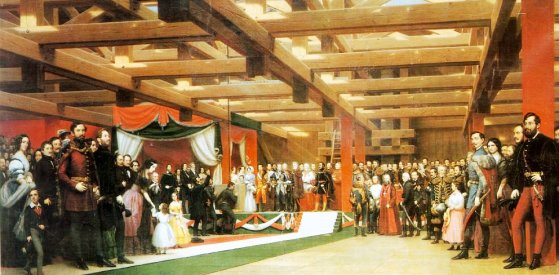
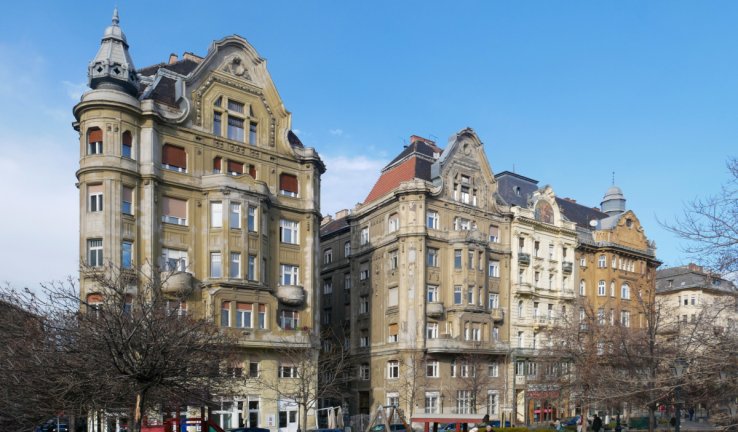
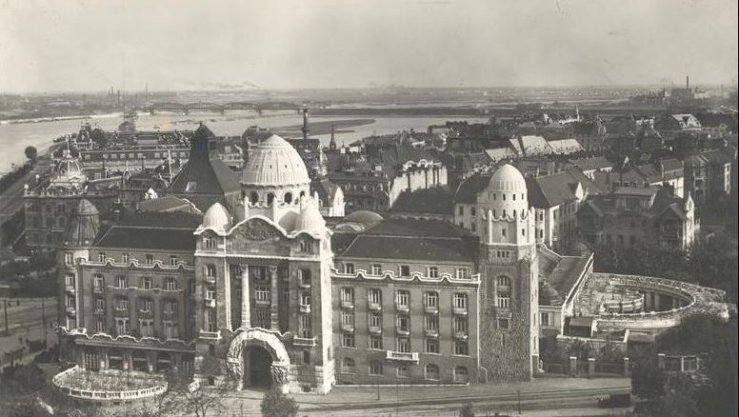

































Hozzászólások
Log in or register to comment!
Login Registration